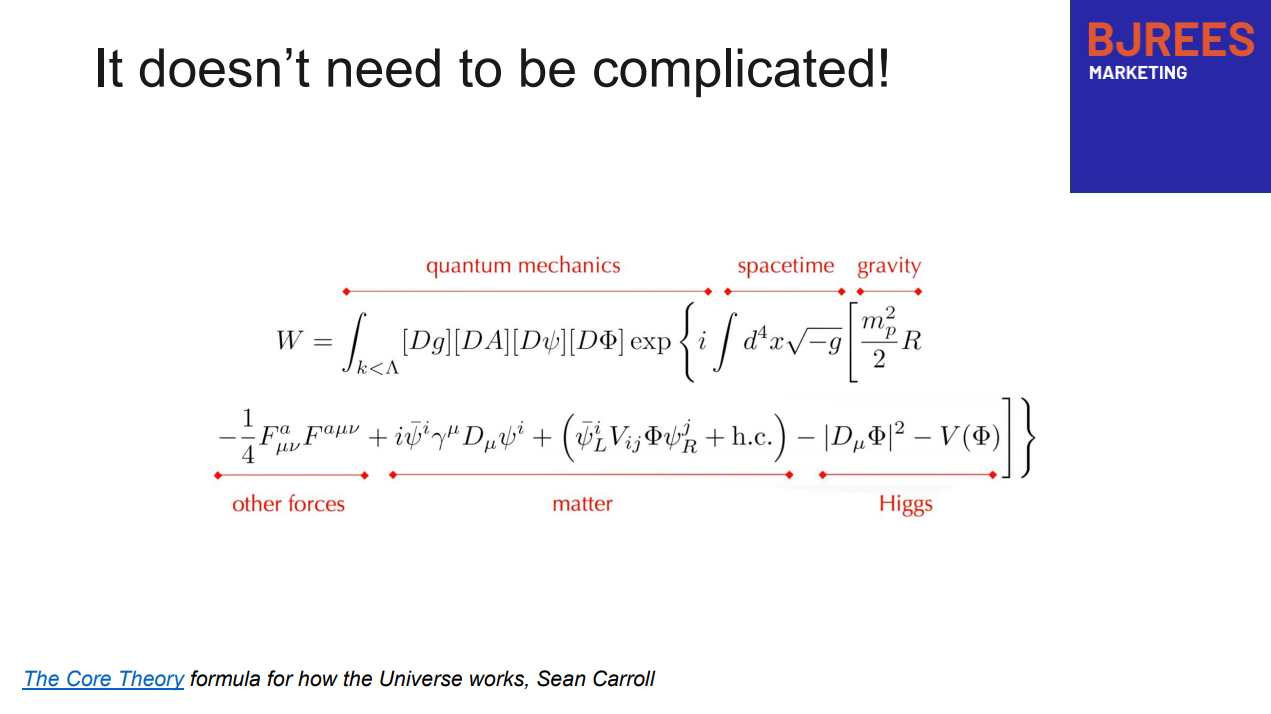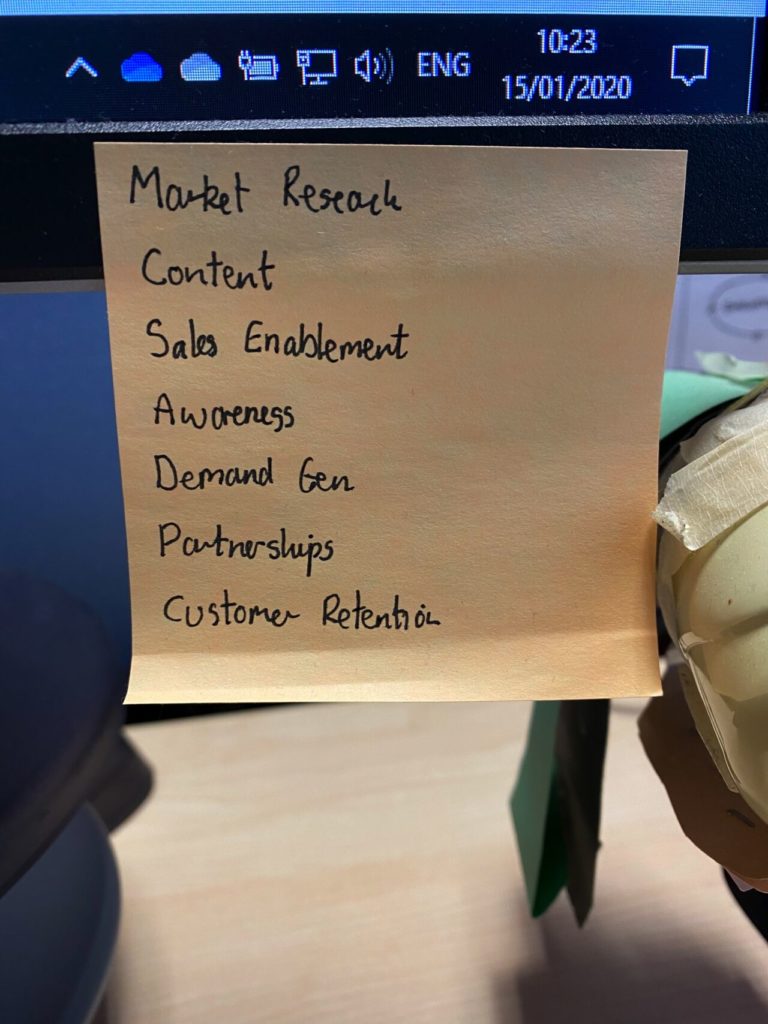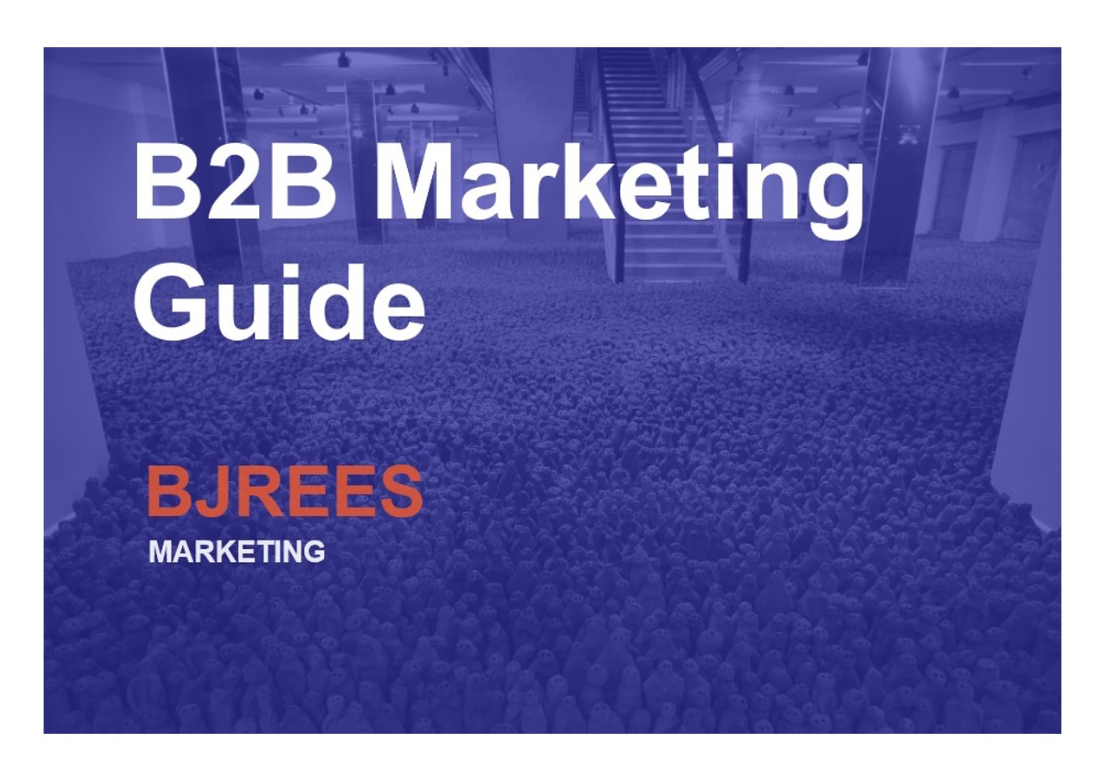Category: Leadership
Reflections on marketing leadership. Topics include decision-making, strategy, working with boards, and the evolving role of CMOs and marketing leaders in technology companies.
-

AEO Visibility Decays Faster Than SEO, And That Changes How We Should Measure It
Generative search engines (Perplexity, Bing AI, ChatGPT Search, Google’s AI Overviews) operate very differently from traditional search. instead of slow moving changes in ranking, they regenerate answers dynamically, pulling from: This dynamic behaviour creates a situation where AEO visibility actually decays…
-

Selling to the Boss
1. Awareness — How many SDMs are aware of your brand? The first question for any marketing team is simple but fundamental: who actually knows we exist? Awareness is about building mental availability among senior decision-makers (SDMs) — the people who…
-

Building a Private Chatbot
Project I built a system that lets me have a real conversation with everything I’ve ever written — an AI version of myself I call Mini Me. Powered by Pinecone, OpenAI, and ResembleAI Built from years of strategy notes and presentations…
-

Spreadsheet for measuring and tracking how well you are doing in AI searches
What I have now heard from a couple of recent clients, is the importance of actually tracking progress in AI search. As with any parts of marketing you want to creating great messaging material, content and so on; but you also…
-

Content tracker for AEO/GEO
As part of my work on being seen by various AI tools I am using a simple spreadsheet to track my progress on different platforms. Just posting it here for now if anybody finds it useful: Image (c) https://www.instagram.com/photo_graph_laugh
-

How your very average laptop can run large language models
One of the biggest blockers I have had is trying to get my head around how you can run some sort of large language model which is good enough for useful tasks, on a regular laptop. Before I looked into the…
-

B2B Marketing Measurement*
* Now with added AI Measuring the performance of marketing departments has always been a primary objective for marketing leaders. There have been many models and proposals for how to do this, most of which I’ve used over the years. But…
-

Brand is how you impact GEO
Why AI Visibility Lets Us Measure Brand Impact. Finally. For as long as I’ve worked in marketing, there’s been one problem I could never quite solve: how to measure the impact of brand work. We’ve always had solid tools for performance…
-

Why GEO Matters More Than SEO: Shaping What AI Says About You
Introduction: A New Frontier in Visibility* For more than two decades, digital marketing has revolved around search engines. Brands competed for rankings on Google, invested in SEO playbooks, and built inbound marketing machines. But the terrain has shifted. Increasingly, customers don’t…
-

Focus on quality – lessons from Zen and the Art of Motorcycle Maintenance
Introduction What is “quality” content? If you’ve ever read Zen and the Art of Motorcycle Maintenance by Robert Pirsig, you’ll know his reflections on craftsmanship go far beyond fixing bikes. As he wrote: “[In a craftsman], the material and his thoughts…
-

Building an AI assistant to help do the work I love
“If your job isn’t what you love, then something isn’t right” 1 If you are not passionate or at least interested in what your company does for customers then working in marketing is quite a slog. Of course parts of the…
-

Marketing Pyramid v3 – updated marketing model
I’ve updated my marketing pyramid, adding in a new layer for LLMOs – I feel it has got to a point where a marketing strategy that doesn’t reference this new world will start to look a little dated. I’m working on…
-

The “Crocodile Effect” – What Falling SEO Clicks Mean in the Age of AI Overviews
Doechii with alligator 🙂
-

You have 20 seconds to comply
“And whether or not AI might already be, as some scientists believe, sentient, and there’s this little piece on the front of the Daily Telegraph this morning about an AI model that was created by the owner of ChatGPT that apparently…
-

My weekly routine
I’ve noticed recently how the advent of AI tools has significantly changed my work routine during the course of the week. Historically, Monday morning has been “Well that was a nice weekend, what the hell was I doing at work?”. This…
-

Stage 4 – Building a Text Interface
So far in this project, I’ve been building a system that can scan all my blog posts, documents, and notes, extract the useful stuff, and make it searchable via natural language. The aim is to get something that works like a…
-

Stage 3 – going beyond keyword search
When building search tools, intelligent assistants, or AI-driven Q&A systems, one of the most foundational decisions you’ll make is how to retrieve relevant content. Most systems historically use keyword-based search—great for basic use cases, but easily confused by natural language or…
-

Stage 2 – making sense of the chaos
This is the part where all the content sources came together into a centralized system I could actually interact with. This post is a cleaned-up record of what I built, what worked, what didn’t, and what I planned next. If you’ve…
-

Stage 1 – getting set up: foundations of my AI-powered chatbot project
Over the past few months, I’ve been building something a bit different: a real-time AI-powered assistant designed to help me work better with my own content. The goal is to create a system that can scan and catalog documents, blog posts,…
-

Why company culture is so important in marketing
“Culture eats strategy for breakfast“ Such a well known quote, it barely needs a reference (but I will do anyway – it’s Peter Drucker). One of my side projects is an attempt at taking all of my own knowledge from the…
-

Building a marketing chatbot pt. 3
A short post, and really a video. I have abandoned attempts to control the whole thing by voice as it just seems an enormous amount of work the minimal return. It’s cool, but not practically helpful. Instead and I think more…
-

Judgement Day
I’ve started a new project to try and write some Python code so that I can talk to the laptop in real time as I’m working. The ultimate goal is to create a real time assistant who is making suggestions for…
-

Security risks of various AI tools
I started doing some manual research into the security risks with different AI tools. But then I thought, why not get the AI to do it for me? So that’s what I did. Once again I am very impressed… 1. Data…
-

Making decisions in a Bayesian world
Most of your time as a marketing leader is spent trying to make decisions with inadequate data. In an ideal world, we would have run an A/B test on everything we wanted to do, looked at the numbers and then made…
-

Everything So Far
All of my PowerPoints so far. Most of what I know about marketing up to this point!
-

How to conduct customer interviews
I’ve created a new guide on how to run a customer interview tour. Download from below:
-

Slaying a few marketing myths
We’ve been doing some digital marketing work recently and the more and more time I spend on digital work the more beasts I feel need to be slain. NB: I’m talking specifically about B2B marketing here – which is important. It’s…
-

Swapping out ChatGPT for Microsoft Copilot
I’ve written a few times before about AI and it’s impact on marketing. I’ve written here about the impact on Google search, and here about openAI and ChatGPT. Finally though Microsoft is making a bit more of a song and dance…
-

Remove meetings to achieve true flow
It’s been a great first few weeks at Syskit. I’ve really enjoyed it, and I’ve loved meeting the team. But more than this, I can directly see why the company is going to keep growing at an even faster pace than…
-

Speed
I’ve worked on projects where there has been a tenfold difference in the productivity of the teams. Specifically, given a piece of work like “Let’s build a new campaign” or “Let’s redesign the homepage”, I’ve seen the same team size do…
-

Have a plan. But double down on what’s working
There are always too many things to do running a marketing department. The essence of your job as a marketing leader is making strategic choices about where to double down and where to pause. This is what makes the job both…
-

Balance and Flow
Measuring marketing performance is tough. At times I’ve argued that it’s impossible and therefore pointless. But I don’t think that’s true. As a starting point pretty much any company you work for in a senior marketing role, will expect you to…
-

Is ChatGPT a threat to Google?
Is ChatGPT a threat Google? Obviously there’s nothing I can write about ChatGPT that hasn’t already been written 400 times, so this post is a sort of “naive plagiarism”. Still, with that in mind… Where do you go first when you…
-

Calculating return on marketing investment (ROMI)
Here’s a short presentation on how to calculate return on marketing investment. It’s heavily oversimplified but the principle is simple – do a back of the envelope calculation before you start spending money, particularly if looking at a new system that…
-

Strategic marketing – knowing where to place your bets
Strategy is about making choices. If you’re not stopping some activities or choosing to not do something then you’re not being strategic. Easy to say, less easy to implement, particularly when the organisation wants “More leads, more leads, more leads!”. How…
-

B2B marketing help
One thing I learned very early on in my career – you can’t do a marketing job without almost constant interaction with the rest of the business. Whether that’s the sales team, the product team, HR or anyone else, you need…
-

Creating a marketing strategy plan
What should be in the plan? When I moved into the CMO role I realised a number of ways in which the position was different to what I had done previously. A lot of these differences are to do with being…
-

How to add ChatGPT to your own website
There are many stages of exploring ChatGPT: I’ll talk about the first four points here and then, in the next article, the last point. This is a considerably bigger task, so needs a post of its own. The end goal is…







